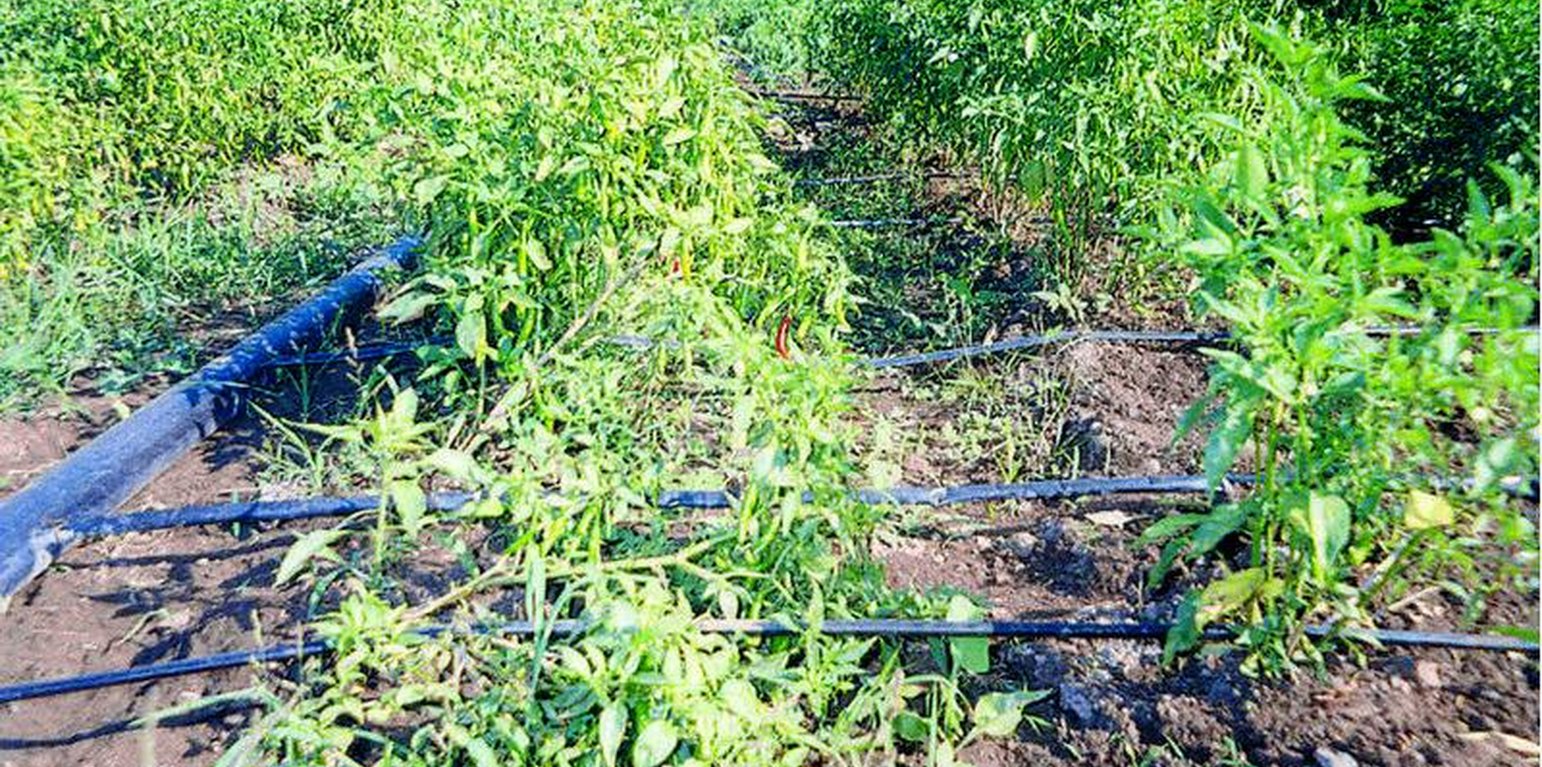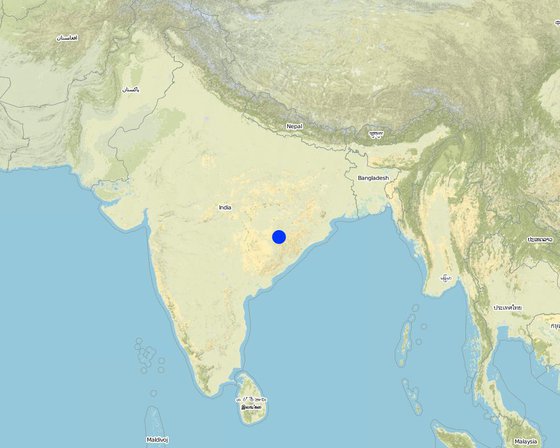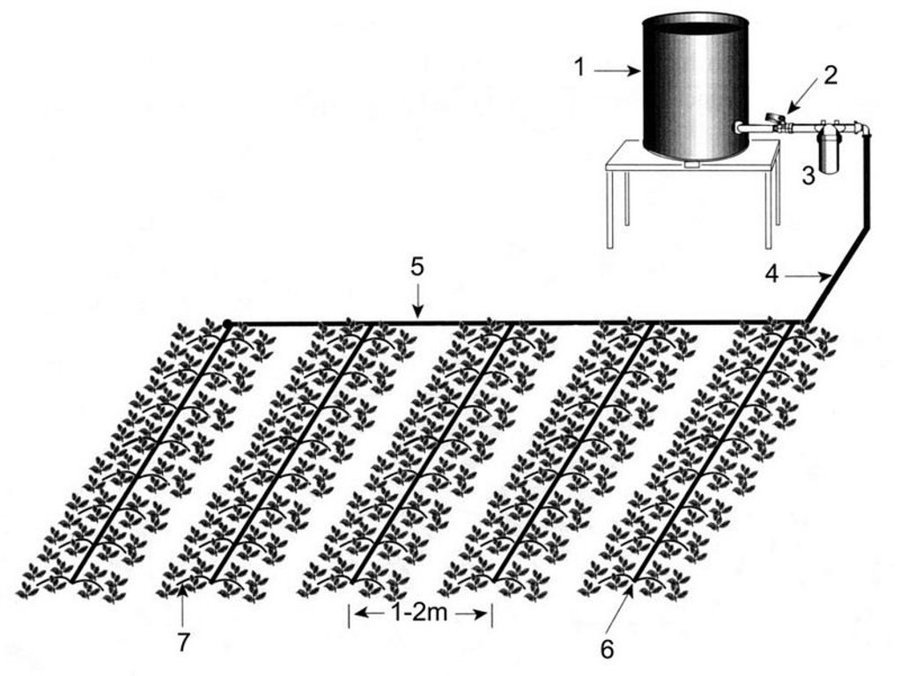



The continued expansion of irrigation in India is causing increasing water shortages. This may be compounded by the potential effects of climate change. Drip irrigation - delivering small amounts of water directly to the plants through pipes - is a technology that could help farmers deal with water constraints. It is considerably more efficient in terms of water use than the usual open furrows or flood irrigation.
In West Nimar, Madhya Pradesh, droughts, diminishing groundwater, limited and erratic power supply coupled with poverty, compelled farmers to look for a technology that would enable them to irrigate their crops (mainly cotton) within these constraints. They tried out several cost-saving options such as using old bicycle tubes instead of the conventional drip irrigation pipes. But nothing caught on - until about five years ago - when a local farmer experimented with thin poly-tubing normally used for frozen fruit-flavoured ‘lollypops’ called pepsee. It spread to neighbouring cotton farmers, and its popularity has meant that today pepsee has become widespread in the region. Pepsee micro-irrigation systems slowly and regularly apply water directly to the root zone of plants through a network of economically designed plastic pipes and low-discharge emitters.
Technically speaking pepsee systems use low density polythene (65-130 microns) tubes which are locally assembled. Being a low pressure system the water source can be an overhead tank or a manually operated water pump to lift water from a shallow water table.
Such a system costs less than US$ 40 per hectare for establishment. But the tubes have a short life span of one (or two) year(s); an equivalent standard buried strip drip irrigation system amounts to between five and ten times the initial cost. The latter would, however, last for five to ten years. The critical factor is the low entry cost. Pepsee systems thus act as ‘stepping stones’ for poor farmers who are facing water stress but are short of capital and cannot afford to risk relatively large investment in a technology which is new to them, and whose returns are uncertain. The technology is today available in two variants: the original white pepsee and a recently introduced black pepsee which is of slightly better quality.
Recently, a more durable and standardised version of pepsee, given the brand name ‘Easy Drip’, has been developed and promoted by a local NGO, IDEI (see corresponding approach). Easy Drip is one product within a set of affordable micro-irrigation technologies (AMIT) promoted by IDEI.

地点: West Nimar, Madhya Pradesh, 印度
分析的技术场所数量:
技术传播:
在永久保护区?:
实施日期:
介绍类型





| 对投入进行具体说明 | 单位 | 数量 | 单位成本 (不适用) | 每项投入的总成本 (不适用) | 土地使用者承担的成本% |
| 劳动力 | |||||
| Labour | ha | 1.0 | 4.0 | 4.0 | 100.0 |
| 施工材料 | |||||
| Lateral piping (Pepsee tube) | ha | 1.0 | 17.0 | 17.0 | 100.0 |
| Main/sub-main PVC piping | ha | 1.0 | 34.0 | 34.0 | 100.0 |
| Other parts (valves, joints et | ha | 1.0 | 40.0 | 40.0 | 100.0 |
| 技术建立所需总成本 | 95.0 | ||||
| 技术建立总成本,美元 | 95.0 | ||||
| 对投入进行具体说明 | 单位 | 数量 | 单位成本 (不适用) | 每项投入的总成本 (不适用) | 土地使用者承担的成本% |
| 劳动力 | |||||
| Labour | ha | 1.0 | 4.0 | 4.0 | 100.0 |
| 施工材料 | |||||
| Lateral piping (Pepsee tube) | ha | 1.0 | 17.0 | 17.0 | 100.0 |
| 技术维护所需总成本 | 21.0 | ||||
| 技术维护总成本,美元 | 21.0 | ||||
More land brought under irrigation. This is seen as a negative aspect
Greater irrigated area with same amount of water
More farmers able to irrigate their land
Poverty reduction